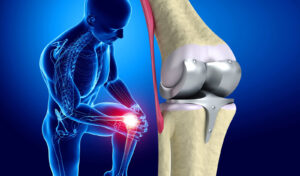
Knee pain is one of the most common reasons for seeking medical care. Over time, conditions like osteoarthritis can damage the cartilage and bones within the knee joint. Osteoarthritis occurs when the protective cartilage at the ends of bones breaks down over many years of use. This loss of cartilage leads to bone rubbing on bone, causing pain, swelling and stiffness.Other conditions that may require knee replacement surgery include severe knee injuries from accidents, repetitive knee trauma in athletes, and inflammatory types of arthritis like rheumatoid arthritis. In all these cases, the goal of knee replacement surgery is to relieve pain and restore function by resurfacing the worn or damaged ends of the bones within the knee joint.
Surgical Procedure for Knee Replacement
Total knee replacement surgery is performed under general or spinal anesthesia. During the surgery, the surgeon will first make an incision on the front of the knee to access the joint. They then resurface the ends of the femur, tibia and patella with artificial components. After removing any bone spurs or damaged areas, the surgeon inserts a synthetic femur component onto the end of the thigh bone. The tibial component is then attached to the top of the shin bone. A plastic spacer is installed between these metal components to replicate the knee cartilage. In some cases, the patella (knee cap) is also replaced with plastic or metal components. Finally, the incision is sewed closed and sterile dressings are applied.
Types of Knee Replacements
There are different types of total knee replacements available depending on patient needs and joint condition:
– Primary knee replacement – For patients experiencing knee pain and disability from conditions like advanced arthritis as their first knee surgery.
– Revision knee replacement – Occurs when an earlier replacement joint fails or loosens over time. The old implants are removed and new components implanted. Revision surgeries are more complex.
– Unicompartmental or partial knee replacement – Only replaces one compartments (medial or lateral) of the knee rather than the whole joint. Less invasive option for those with isolated arthritis in one area.
– Bicompartmental knee replacement – Resurfaces the inner and outer portions of the knee but not the back. A less complex alternative to total knee for some patients.
– Specialized knees – Implants designed for patients with specific conditions like rheumatoid arthritis or those who are very active or overweight. These knees include advanced material choices and customized sizing options.
Post-operative Rehab and Recovery
Most patients are able to go home just a few days after total knee replacement surgery. During the first few weeks after surgery, physical therapy is important to help regain knee mobility, strength and function. Exercises and practices like bending, straightening and putting weight on the new joint are prescribed. Patients may require the use of walking aids like a walker or cane initially. Driving can typically resume in 4-6 weeks once off all pain medications. Within 3 months, many can participate in regular low impact activities. However, a full recovery can take 6 months to a year as the muscles, tendons and soft tissues continue to heal fully around the new joint. Following the surgeon’s guidelines is key to ensuring the best long-term outcome and knee replacement lifespan.
Longevity and Outcomes of Modern Knee Replacements
Advancements in implant materials, surgical techniques and rehabilitation have led to dramatically improved outcomes with knee replacements over the past few decades. When performed by an experienced surgeon in an appropriate candidate, studies show:
– Over 90% of knees replacements last 10-15 years
– 80% function well at 20 years with appropriate activity modifications if needed
– Longevity increases with patient age, lower weight and activity levels
– Infection rates are less than 1% with proper precautions
– Functional improvement over pre-operative pain levels averages 75-90%
– Patient satisfaction surveys show over 90% would have the surgery again.
While knee replacements do eventually require revision procedures in some cases, modern implants provide excellent mobility, pain relief and return to activities for the average patient. Continued innovations in implant design, surgical robots, and personalized replacements aim to further enhance longevity and natural movement close to normal knees.
Summary
Knee replacement surgery has transformed the lives of millions each year who suffer from severe knee pain and disability. Advancing techniques and technology continue to refine knee implant options and improve results. When performed judiciously in appropriately screened patients, total knee arthroplasty effectively relieves pain while restoring function, mobility and quality of life for individuals suffering from arthritic and damaged knees. With proper rehabilitation post-surgery, artificial knees can last many years for most patients, supporting an active lifestyle without compromising goals or independence. As longer term outcomes continue strengthening, knee replacement will remain a highly successful surgery for managing end-stage knee conditions.
*Note:
1. Source: Coherent Market Insights, Public sources, Desk research
2. We have leveraged AI tools to mine information and compile it



